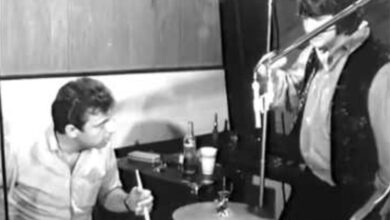The Genuine Sound of The Soggy Bottom Boys in “Man of Constant Sorrow”
“Man of Constant Sorrow” is a song that showcases the timeless nature of folk music, encapsulating themes of sorrow, loss, and the human condition with its poignant lyrics and haunting melody. The song’s roots can be traced back to the early 20th century, and it has been performed by numerous artists, each bringing their unique interpretation to this moving ballad. The song’s narrative speaks of a man burdened by hardship and regret, often interpreted as a reflection of the struggles faced by many throughout history.
The version famously featured in the film “O Brother, Where Art Thou?” highlights the power of storytelling within music, as the characters in the film navigate their own trials in the Deep South during the Great Depression. The Soggy Bottom Boys, although fictional, are portrayed as a ragtag group of characters seeking redemption and freedom, which ties poignantly to the song’s themes. The film itself, directed by the Coen brothers, achieved a cult status, partly due to its portrayal of the era along with its expertly curated soundtrack that introduced a new generation to the beauty of American roots music.
Dan Tyminski’s rendition of “Man of Constant Sorrow” provided a contemporary yet respectful take on this traditional number. As a member of Alison Krauss and Union Station, Tyminski is acclaimed for his exceptional guitar skills, as well as his ability to convey deep emotion through his vocals. His interpretation of the song remains a benchmark in bluegrass music, seamlessly marrying traditional elements with modern sensibilities, allowing the song to resonate with audiences both old and new.
The song’s lyrics have an almost universal appeal, reflecting the struggles that many face in their lives. Lines evoking a sense of longing and heartache tap into shared human experiences, making “Man of Constant Sorrow” a staple in folk and country music repertoires. The themes conveyed in the song can be interpreted in various ways, which speaks to its enduring quality; listeners may find personal meaning in the lyrics based on their own experiences, whether those involve loss, heartache, or the quest for redemption.
Moreover, the success of the “O Brother, Where Art Thou?” soundtrack played a crucial role in reviving interest in folk and bluegrass music. The Grammy-winning album not only showcased the talent of artists like Tyminski but also introduced audiences to a wide variety of traditional sounds that had been relatively underappreciated in mainstream music for years. This renaissance led to an increase in performances and festivals celebrating American roots music and thus encouraged countless musicians to delve into the genre.
As for the collaborative aspect of the song’s recording, the harmonies provided by Harley Allen and Pat Enright added depth and richness, enhancing the song’s emotional weight. Harmonies in folk and bluegrass music often serve to create a collective voice, representing a community that shares in the storyteller’s journey. In this case, the supportive vocal layers allow the song’s melancholy narrative to shine even brighter, making it a memorable listening experience.
In terms of the song’s legacy, “Man of Constant Sorrow” has been covered by a wide array of artists in countless styles, from bluegrass to rock and even pop interpretations. Each new version serves to reintroduce the song to varied audiences, ensuring that its themes remain relevant across generations. Notable covers extend beyond the folk genre, as modern artists find innovative ways to reinterpret classic folk songs for contemporary listeners while still paying homage to the original artistry.
The portrayal of the song in “O Brother, Where Art Thou?” stands as a testament to the power of film in promoting music. The visual imagery combined with the emotional resonance of the song creates a lasting impression that reverberates long after the credits roll. This merging of sound and narrative exemplifies how music can enhance storytelling, ground characters in their emotional journeys, and evoke a profound response from the audience.
Dan Tyminski’s continued work in the music industry, along with the ever-growing popularity of folk and bluegrass music, means that “Man of Constant Sorrow” will likely remain an enduring piece of American folklore. As the appreciation for traditional music grows, so too does the relevance of songs like this one, which continue to evoke empathy and connection through their timeless narratives. The haunting story of the “Man of Constant Sorrow” remains a powerful reminder of the shared struggles of humanity, celebrated through the medium of song.





